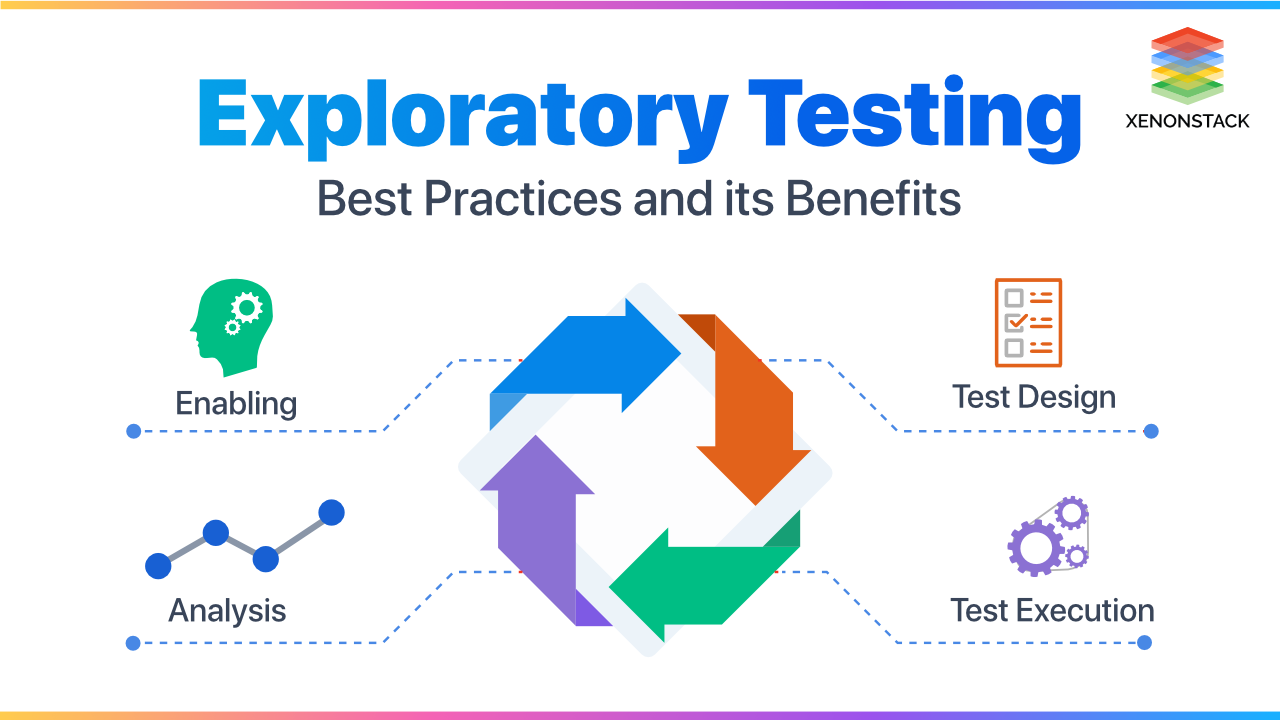
What is Exploratory Testing?
Exploratory Testing (ET) is all about exploring, to understand that what software can do or cannot do. It is a testing process which does not require any test case or test plan documents to test an application. In this testing, testers identify the functionality of an application by exploring the application, learning about the application, designing application and finally, in the last execution of test plans according to findings. It is just an approach, that helps to identify what actions performed next and these actions determined by current action.A type of testing in which individual units or functions of software testing. Click to explore about, Unit Testing Techniques
How Exploratory Testing Works?
The main benefit of exploratory testing is that it requires a minimal amount of planning. Testers continuously decide for their next step of testing, and the decision depends upon the tester's thought process.The base for Exploratory Testing
It monitors the following -- Test Coverage - Reports created for all test cases required to be covered and to improve the quality of software.
- Risks - Types of risks needed covered and significant risks.
- Test Execution Log - Recording for the test execution.
- Issues/Queries - Reporting notes for issues in the system.
How to adopt Exploratory Testing?
Before starting exploratory testing, be aware of the following things -- Product Quality Assessment.
- Making track of issues raised while this type of tests.
- Write test cases by observations gathered by going through an application.
- Execution of test cases.
- Learn
- Test Design
- Test Execution
- Analysis
Intelligent Test Automation Improves Software Testing Capabilities. Click to explore about, Test Automation in DevOps
What are the benefits of Exploratory Testing?
- The main benefit of exploratory testing is that it requires a minimal amount of planning.
- Testers continuously decide for their next step of testing, and the decision depends upon the tester's thought process.
- It helps to provide feedback to developers as soon as possible.
- A larger number of bugs or defects can be uncovered using this way of testing.
- A larger group of the resource such as a developer, tester, BA, Designers perform ET as there are no scripted test cases and each test case leads to a different perspective.
- Exploratory testing helps in exploring critical issues.
- In the case of Iterative coding of an application, ET focuses on testing new hallmarks while automation does Regression and Backward compatibility testing.
- In the case of Iterative coding style for an application, ET mainly focuses on test in hallmarks while automation does follow a regression and backward compatibility testing.
- In the case of unstable requirement, ET helps in testing the new environment within a limited time.
Why Exploratory Testing Matters?
- It helps to promote Real-Time thinking and also helps to uncover more and more defects.
- It promotes use cases as well as Scenario-Based testing.
- It converts the minimal documentation process into maximum testing in a form because test cases are written by exploring an application.
- It is also helpful in learning of a tester.
- It also avoids duplicate work.
A process that allows the user to check that the provided data, they deal with, is valid or complete. Click to explore about, Guide to Data Validation Testing
What are the best practises of Exploratory Testing?
The best practises of Exploratory Testing are listed below:
Free-Style EAT
- This type of testing requires testing of an application in an ad-hoc style.
- It is a type of testing that includes no rules and no account for coverage.
- It is used when there is a need to be familiarized with the application in a quick way.
- It is required when the user wants to verify the work of other testers and there is a need to investigate or to detect issues using tests in a quick way such as Smoke test.
Scenario-based EAT
- It is done in a scenario way or based on a scenario.
- This type of testing starts with a real user's interaction with the application or end to end scenarios or test scenarios.
- After the initial phase of testing, make a variation to testing by injecting different variations to testing as per learning and observation of tests observed while testing process.
What are the Scenarios?
Scenario mainly acts as a generic guide for what to do during an Exploratory Testing. Explore multiple possible paths of a scenario to ensure that all the possible paths of scenario covered, then only then surety can be obtained that a specific scenario of application is working properly. So to do the type of testing at the best level, require exploration of the scenario of the application at a larger level. For example - While talking about a login scenario of an application, explore login scenario more and more for effective working of the application.Strategy based EAT
This testing compared with a Boundary Value analysis, equivalence technique and risk-based technique combined under one type of testing under single Exploratory testing.Exploratory Automated testing
It is a type of method that helps a tester in streamlining bug reporting and reproduction, gathering of snapshots and preparation of future regression suit. It's a type of process that combines Automation Testing with Exploratory Testing. It can be categorized into two types, which are as follows -Passive EAT
It is a type of test performed by a single tester or as well as a pair of testers. In this type of test, a tool records report and are installed on a resource's system. Tool installed at tester's system helps to record test case and also defect reporting.Active EAT
It is also advised to perform an Active EAT test with Pair Testing. In this type of testing, keyword-driven testing is used in sync with session testing. Mainly what process followed for this type of test - In this type of test, scripts created by one tester and executed by others. In an automated approach of testing automated test cases discovered, then the design of test cases only depends on what is determined previously in design.Agile Exploratory Testing
- Under Agile methodology, software is released in small iterations.
- Each iteration goes through planning, estimation, development, integration, testing, and release.
- With frequent releases, test automation becomes important to get quick feedback on the status of software or an application.
Big Data is the trend that is revolutionizing society and its organizations due to the capabilities it provides to take advantage of a wide variety of data, in large volumes and with speed. Click to explore about, Big Data Testing Best Practices
What are the best Exploratory Testing tools?
The best Exploratory Testing tools are listed below:
Session Tester
It comes under an exploratory testing tool for management and recording of session-based testing. It contains a timer that limits test sessions for a particular length. It also provides an easy way to record session notes. This tools mainly stores notes in an XML format converted to HTML. Notes stored in an XML format converted into a format depending upon requirements.Test Studio
This tool performs testing in a more efficient way or format. It is an extension directly added in a browser. It helps teams or members of a team to send ideas and feedback directly from an application while browsing an application or at a time when making testing on an application by using different formats. Using this tool, reports generated in a format like a word and PDF. It also provides a feature to mail the content which contains screenshots and annotations.qTest Explorer
This tool tracks a user's interaction information while the user makes interaction with an application. It uses tracked details for application to create a detailed defect document automatically. It supports recording for any applications on any kind of platform like on the browser as well as on a desktop application.Microsoft Test Manager
It is a type of testing tool; it helps to record the actions of a user to perform as they work with their application. It also allows the user to record screenshots, comments, file attachments, audio narration, and screen videos. The recordings which are made by using this tool, helpful in tracing of any fault that the user might discover. Using this tool, user store actions in the form of the test case to replicate tests after the application is updated.Concluding Exploratory Testing
This type of testing consists of a series of focused sessions following a charter document to test a specific feature or area. Exploratory testing should be a significant part of any team approach to overall quality strategy. It only on depends upon a tester's skills, experience and frequently find bugs as much as bug testers can find, before making delivery of product or application to a customer. It is a supplement or another form of testing rather than replacement of a manual, Automated, Performance and Load tests.
- Discover more about Test Driven Development Tools
- Read here about Best A/B Testing Tools and Practices


